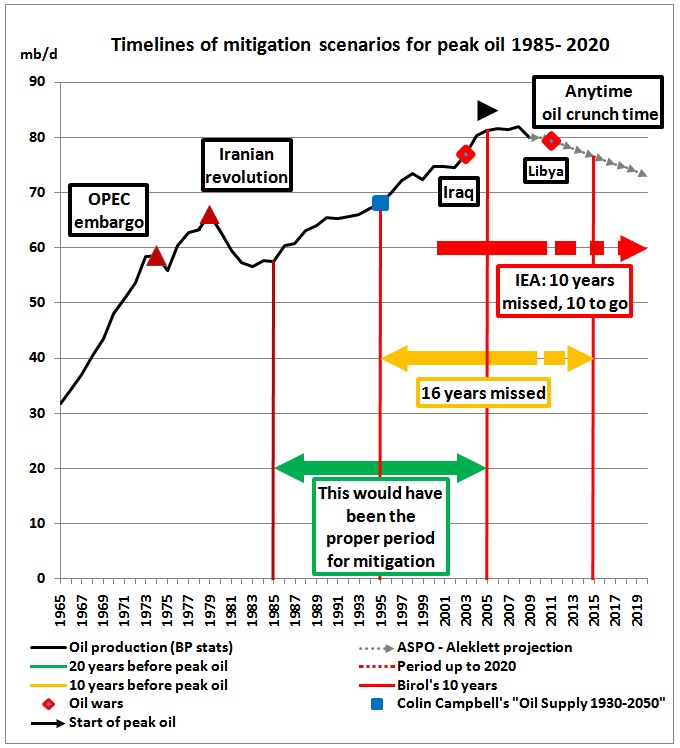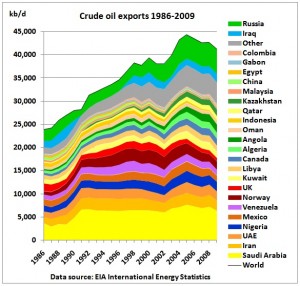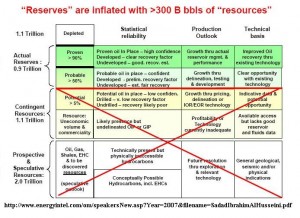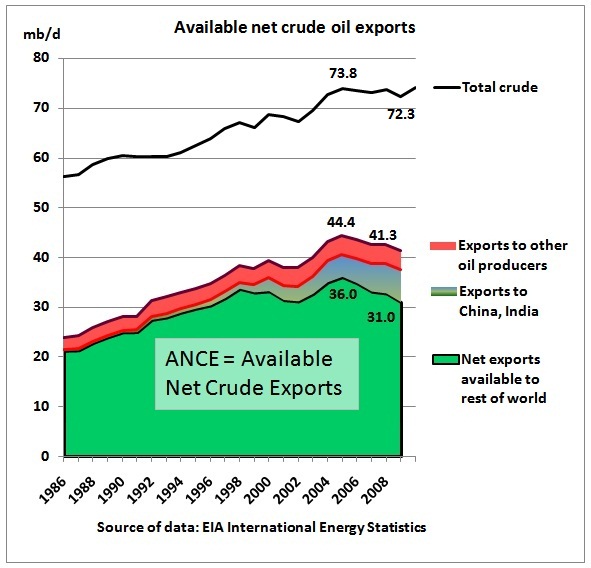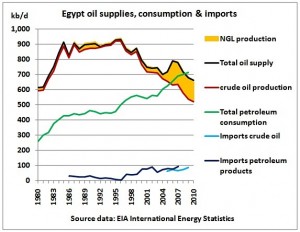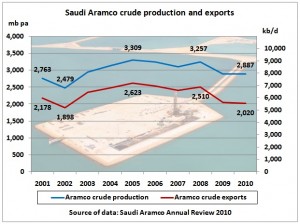(A) Why is the timeline for an orderly transition just 10 years?
Oil: We have missed implementation windows for peak oil mitigation long ago:
In Australia: “Yes, Prime Minister”, peak oil 2006 under your watch
http://crudeoilpeak.info/yes-prime-minister-peak-oil-2006-under-your-watch
CO2 – global warming: in relation to a 350 ppm CO2 target (see below), we are in overshoot mode since 1990
 http://www.davosnewbies.com/wp-content/uploads/2009/06/co2-data-noaa.gif
http://www.davosnewbies.com/wp-content/uploads/2009/06/co2-data-noaa.gif
8/3/2010
NASA climatologist James Hansen at Sydney Uni: “Australia doesn’t agree now that they got to stop their coal, but they are going to agree. I can guarantee you that within a decade or so because the climate change will become so strongly apparent that’s going to become imperative”
http://www.usyd.edu.au/sydney_ideas/lectures/2010/professor_james_hansen.shtml
http://www.stormsofmygrandchildren.com
 << Flooded industrial estate in Ayutthaya, Thailand, October 2011
<< Flooded industrial estate in Ayutthaya, Thailand, October 2011
TONY JONES: …. why worry about carbon dioxide when water vapour is a stronger greenhouse gas and actually occurs naturally?
JAMES HANSEN: Yeah, that’s the screwiest argument which keeps being made again and again and again. The amount of water vapour in the atmosphere is determined by the atmosphere’s temperature, everyone should know that.
As you go to a warmer climate the atmosphere holds more water vapour because at the places where the humidity reaches 100 per cent the water vapour falls out as water or snow. And therefore, as the planet becomes warmer, the atmosphere holds more water vapour.
That’s why we get heavier rain falls as the planet gets warmer. So this water vapour is an amplifying feedback. It makes the greenhouse effect much stronger. But it’s not something that just changes on its own accord; it changes in response to the temperature changes.
http://www.abc.net.au/lateline/content/2008/s2764523.htm
(B) Explanation of arrows in above system diagram
(1) The world lives on cheap consumer goods from China and fuels economic growth there
(2) The consumerism was mainly financed from debt which has accumulated since WW2
A 65 year debt bubble starts to deflate. Article from Gail Tverberg, an actuary from Atlanta
http://ourfiniteworld.com/2011/10/10/the-united-states-65-year-debt-bubble/
(3) Also accumulated has CO2 in the atmosphere and the oceans. In 1990 CO2 concentration has exceeded the threshold of 350 ppm
 http://www.columbia.edu/~jeh1/2008/TargetCO2_20080407.pdf
http://www.columbia.edu/~jeh1/2008/TargetCO2_20080407.pdf
(4) In order to arrive at a low carbon economy massive investments need to be funded
(5) The CO2 debt continuously generates cost in the form of damages by global warming related events like storms, floods, droughts, fires etc. This is similar to paying interest on a loan
(6) The CO2 must be removed down to a level of 350 ppm. This is like repaying the capital of a loan.
(7) Removing CO2 from the atmosphere will require huge projects which must be funded
(8) The cost of global warming repair bills will likely be met by more debt, directly or indirectly by higher budget deficits
(9) This will be the last desperate printing of money: when global warming has become so disruptive to the economy and the combination of peak oil and the debt crisis has damaged the financial system to such an extent that it can’t provide the funds for the projects to reduce CO2, governments will have no other choice.
(10) The debt crisis will make it hard to finance projects needed to proceed to a low carbon economy
(11) Money printing is used to roll-over or pay-back debt
(12) Money printing is misused to pay for high oil import bills. This of course leads to higher oil prices, a vicious feed-back loop
(13) With high oil prices it is difficult to pay back debt.
(14) Peaking oil production will ultimately lead to declining oil production
(15) Even if crude oil production stays flat, net oil exports will continue to decline, a process which has started already in 2005 with the peaking of crude oil exports.
16) Declining net oil exports lead to higher oil prices
(17) High oil prices on the world market lead to higher economic growth in countries with net oil exports and therefore higher demand for oil
(18) Once oil decline starts, net oil exports will fall even more
 ASPO: 2020 crude oil production down by around 8 mb/d
ASPO: 2020 crude oil production down by around 8 mb/d
http://crudeoilpeak.info/aspo-2020-crude-oil-production-down-by-around-8-mbd
(19) OPEC’s claimed “reserves” contain more expensive and slower to produce resources leading to earlier decline in production
(20) High oil demand from Chindia leads to available net oil exports declining
(21) High oil demand in countries with net oil exports reduce net oil exports available for the rest of the world
(22) Unsolvable problems in the Middle East will lead to armed conflicts which will impact on oil production and oil exports
Nuclear agency says Iran worked on weapons
http://english.aljazeera.net/news/europe/2011/11/201111818926810103.html
(23) In some MENA countries declining oil production has led to increasing oil imports resulting in a blow-out of fuel subsidies and other budget problems. The convergence of these trends with the Arab uprising may spread to other oil producing countries
Egypt is now a net oil importer
Saudi crude production and exports have peaked as predicted by Matthew Simmons in his book “The coming Saudi oil shock and the World Economy”
http://www.oilcrisis.com/simmons/
Further reading:
Financial impacts of reaching limits to growth
http://ourfiniteworld.com/2011/11/08/financial-impacts-of-reaching-limits-to-growth/

